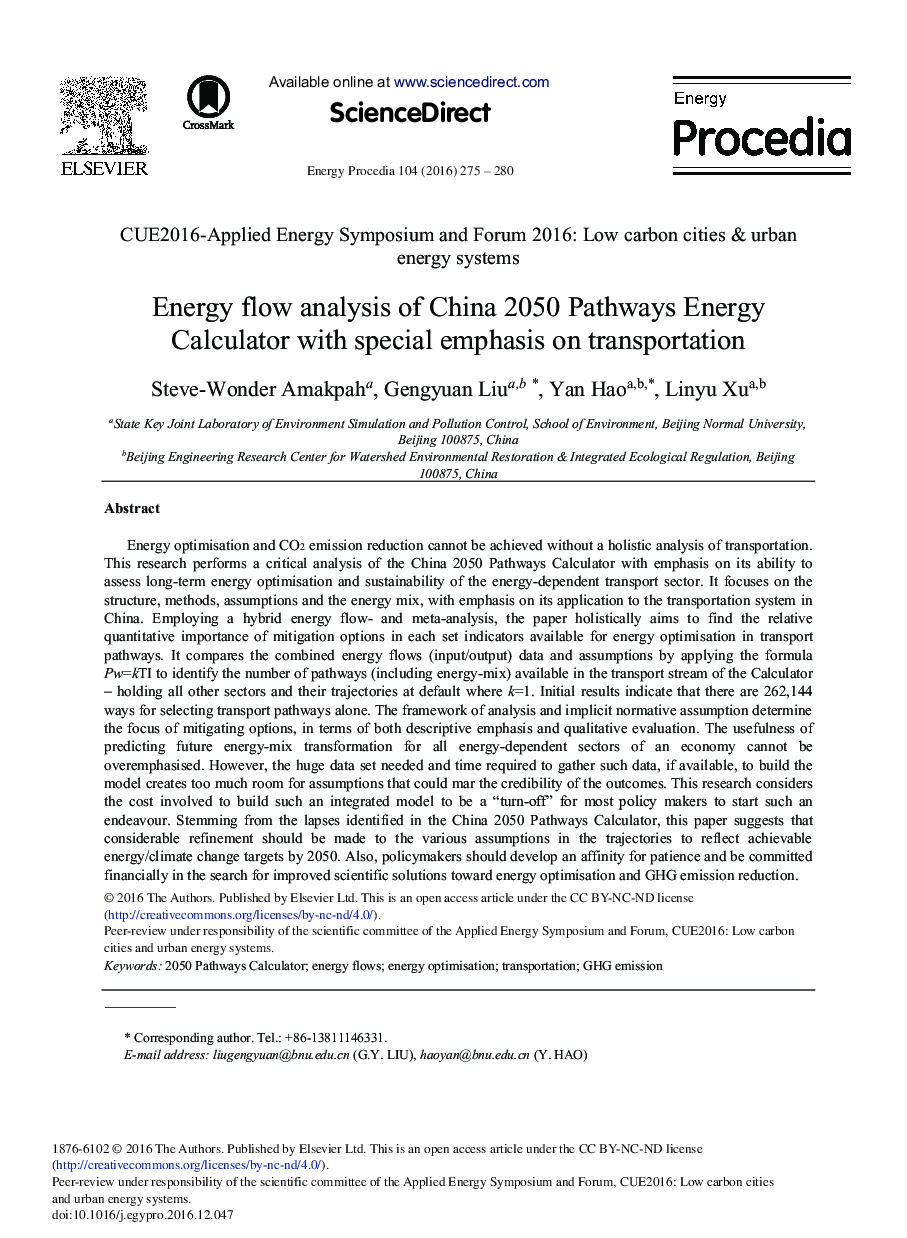| Article ID | Journal | Published Year | Pages | File Type |
|---|---|---|---|---|
| 5446374 | Energy Procedia | 2016 | 6 Pages |
Abstract
Energy optimisation and CO2 emission reduction cannot be achieved without a holistic analysis of transportation. This research performs a critical analysis of the China 2050 Pathways Calculator with emphasis on its ability to assess long-term energy optimisation and sustainability of the energy-dependent transport sector. It focuses on the structure, methods, assumptions and the energy mix, with emphasis on its application to the transportation system in China. Employing a hybrid energy flow- and meta-analysis, the paper holistically aims to find the relative quantitative importance of mitigation options in each set indicators available for energy optimisation in transport pathways. It compares the combined energy flows (input/output) data and assumptions by applying the formula Pw=kTI to identify the number of pathways (including energy-mix) available in the transport stream of the Calculator - holding all other sectors and their trajectories at default where k=1. Initial results indicate that there are 262,144 ways for selecting transport pathways alone. The framework of analysis and implicit normative assumption determine the focus of mitigating options, in terms of both descriptive emphasis and qualitative evaluation. The usefulness of predicting future energy-mix transformation for all energy-dependent sectors of an economy cannot be overemphasised. However, the huge data set needed and time required to gather such data, if available, to build the model creates too much room for assumptions that could mar the credibility of the outcomes. This research considers the cost involved to build such an integrated model to be a “turn-off” for most policy makers to start such an endeavour. Stemming from the lapses identified in the China 2050 Pathways Calculator, this paper suggests that considerable refinement should be made to the various assumptions in the trajectories to reflect achievable energy/climate change targets by 2050. Also, policymakers should develop an affinity for patience and be committed financially in the search for improved scientific solutions toward energy optimisation and GHG emission reduction.
Related Topics
Physical Sciences and Engineering
Energy
Energy (General)
Authors
Steve-Wonder Amakpah, Gengyuan Liu, Yan Hao, Linyu Xu,
